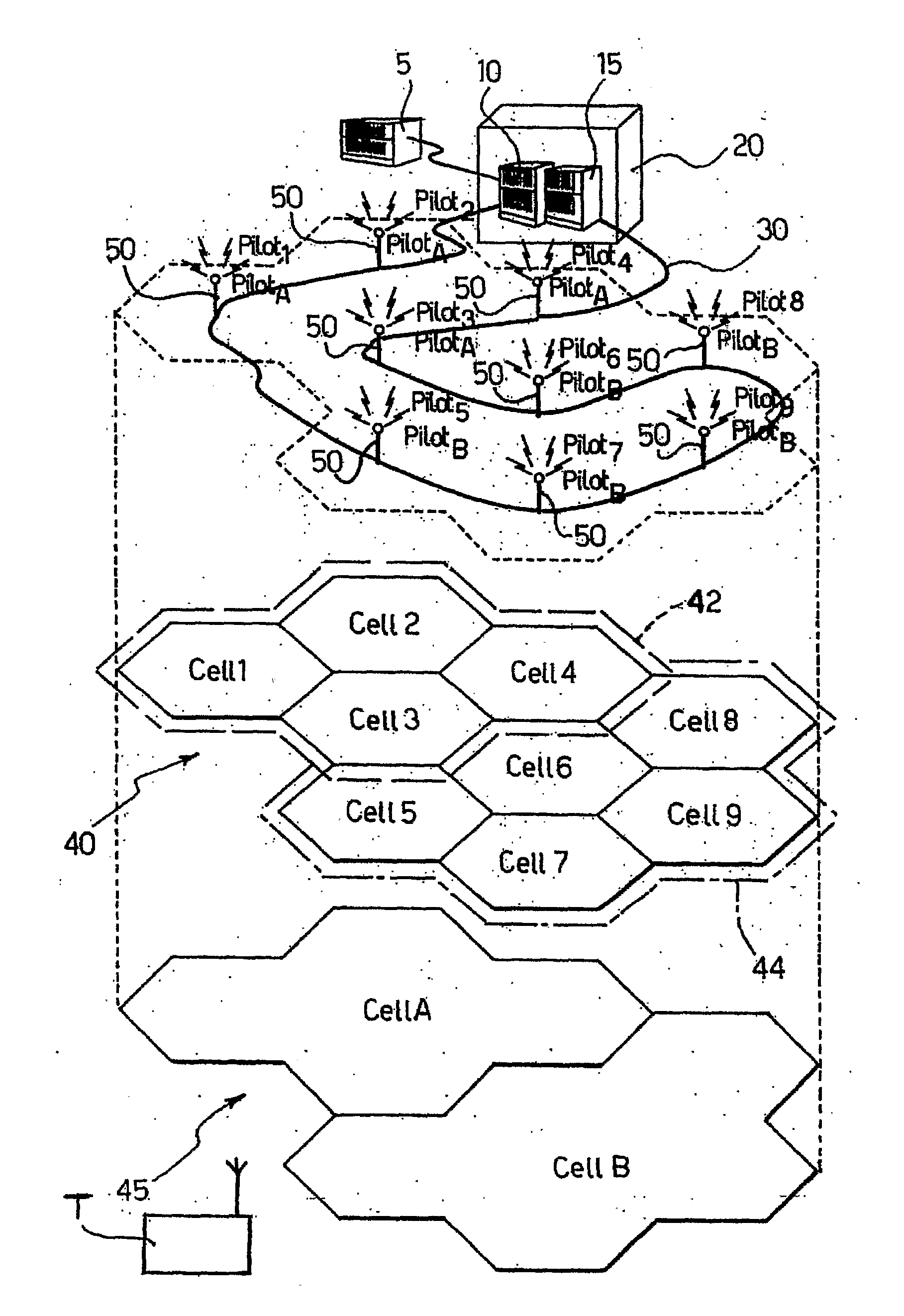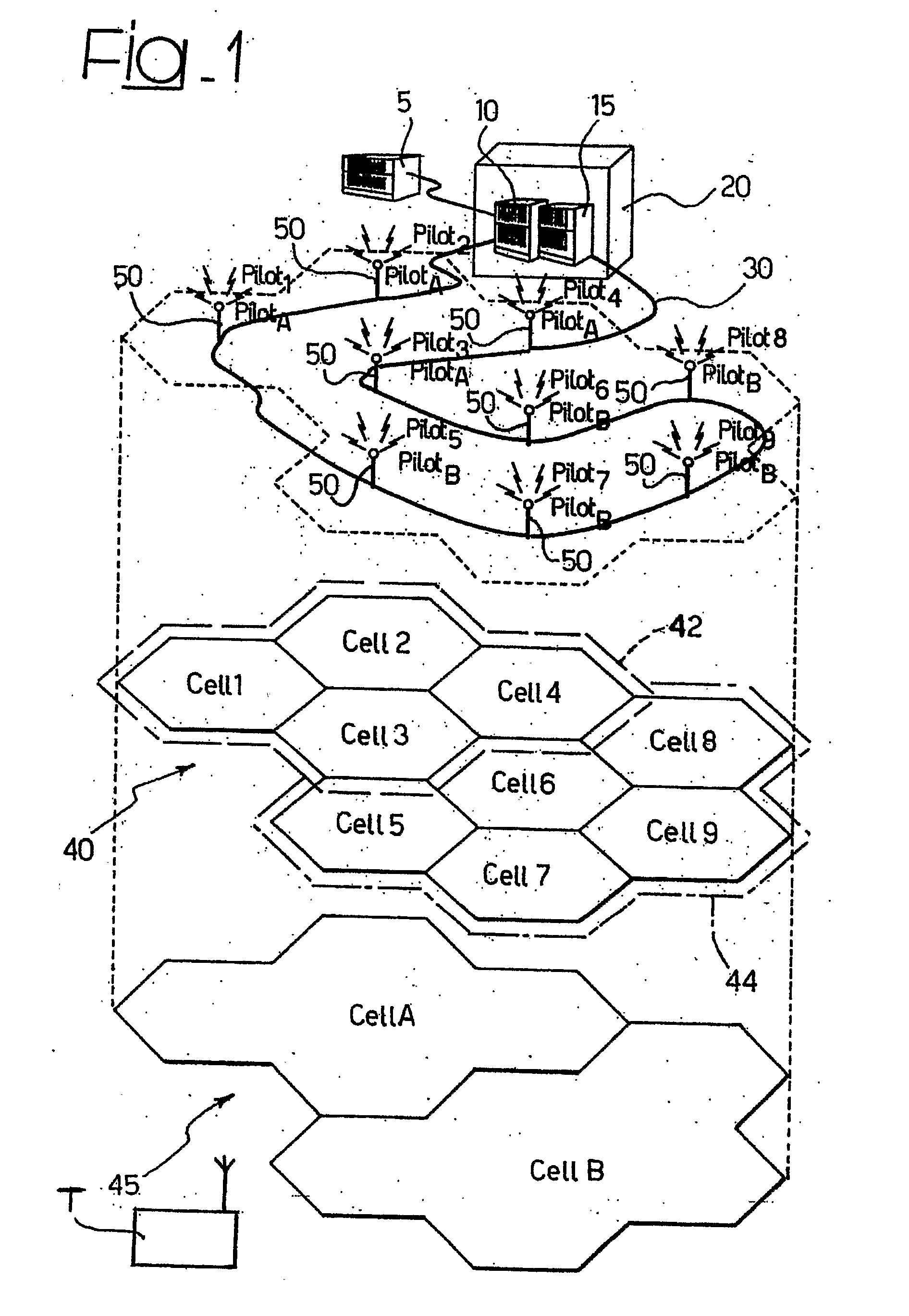Radio-Access Method for Mobile-Radio Networks, Related Networks and Computer Program Product
a mobile radio and access method technology, applied in the direction of wireless communication services, electrical equipment, wireless communication services, etc., can solve the problems of signal overload on the uplink and downlink, processing delays are inevitable, and call drop, etc., to achieve the effect of degree of flexibility
- Summary
- Abstract
- Description
- Claims
- Application Information
AI Technical Summary
Benefits of technology
Problems solved by technology
Method used
Image
Examples
Embodiment Construction
[0050]FIG. 1 illustrates an example of base structure of a distributed antenna system. Specifically, the arrangement shown in FIG. 1 can be designated a Hierarchical Distributed-Antenna System (H-DAS).
[0051]The system in question includes a network controller 5, in which there reside the modules that control operation of the hierarchical system, a set of radio base stations 10, 15 of a conventional type which, by way of non-limiting example, are represented co-allocated in a single location referred to as “Base Station Hotel” designated as a whole by the reference number 20.
[0052]As is well known, in UMTS technology, the apparatuses that perform the functions of radio base stations (BTSs) 10, 15 assume the name of Nodes B, whilst the network controller 5 assumes the name of Radio Network Controller (RNC).
[0053]The radio base stations 10, 15 are connected through a connection 30 of the Radio Over Fibre (ROF) type to a set of remotized antenna elements 50 (nine in number in the exampl...
PUM
 Login to View More
Login to View More Abstract
Description
Claims
Application Information
 Login to View More
Login to View More - R&D
- Intellectual Property
- Life Sciences
- Materials
- Tech Scout
- Unparalleled Data Quality
- Higher Quality Content
- 60% Fewer Hallucinations
Browse by: Latest US Patents, China's latest patents, Technical Efficacy Thesaurus, Application Domain, Technology Topic, Popular Technical Reports.
© 2025 PatSnap. All rights reserved.Legal|Privacy policy|Modern Slavery Act Transparency Statement|Sitemap|About US| Contact US: help@patsnap.com



